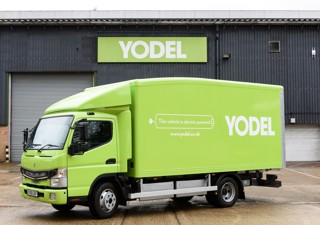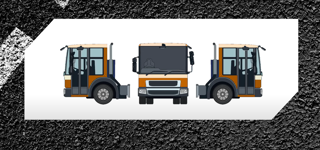Euro NCAP has announced that it will provide detailed information about the safety of heavy trucks via a Truck Safe City and Highway rating scheme.
The new Truck Safe rating scheme, which is outlined in its latest report Safer Trucks: on the Road to Vision Zero, will help commercial fleet operators identify and assess the safety level of equipment in their heavy truck fleets.
Not only will this deliver enhanced safety for drivers, says Euro NCAP, but it will create a market for safe technology that will allow manufacturers to innovate and advance their offering within a clear framework.
Cities and public authorities will be able to clearly identify the best vehicles for their roads and incentivise adoption and companies will be able to easily determine the vehicle specifications they need to comply with in road authority schemes.
Rikard Fredriksson, vehicle safety advisor of the Swedish transport administration (Trafikverket) and a member of the Euro NCAP Board, said: “In Sweden, we see head-on crashes, and especially with heavy trucks, as one of the biggest challenges in developing a safe road transport system.
“Based on the successful experience of Euro NCAP passenger car testing saving lives, we expect Euro NCAP’s new rating scheme for heavy trucks to be a strong tool in addressing this major issue on our country’s roads.”
Heavy trucks represent almost 1.5% of vehicles on Europe’s roads and are involved in almost 15% of all EU road fatalities.
Matthew Avery, chief research strategy officer at Thatcham Research, said: “Advanced Driver Assistance technologies are now standard on most European cars, and they are contributing to more than a 40% reduction in some crashes.
“Heavy trucks have the very same crashes but don’t have this technology fitted, leading to a disproportionate number of casualties in crashes involving heavy vehicles.”
Euro NCAP believes creating a market where the safest choice of vehicle is the most profitable choice of vehicle will be critical to success.
One way of achieving this is for Euro NCAP to link with national, regional and local initiatives such as local access restrictions, freight best practice schemes, public procurement contracting, and insurers to create incentives.
If combined with a more robust and harmonised framework of technical standards, Euro NCAP says that this will create the buying power necessary to generate the demand for safer vehicles that manufacturers need if they are to combine innovation and commercial success.
However, it adds, one size certainly does not fit all. For example, many trucks will be used depot-to-depot and never go near a built-up area. Others will spend their time distributing goods in cities, and others such as 4-axle rigid tippers might need to access off-road sites, rural lanes, motorways, and city centres.
Euro NCAP says that there is no point encouraging an urban-specific safety solution on a truck that never enters an urban area – that would create a cost without a benefit.
But if vehicles without urban safety systems are permitted, it is only right to allow cities to try and keep them out of areas where those urban risks are high.
This has led to Euro NCAP’s concept of a dual rating for city and highway environments. All vehicles will be rated against both sets of criteria.
If vehicle operators buy a vehicle for a specific use, they also only need to consider the appropriate rating. Only general-purpose vehicles require good performance in both ratings.

























Login to comment
Comments
No comments have been made yet.